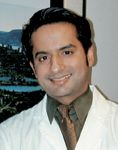- Acne
- Actinic Keratosis
- Aesthetics
- Alopecia
- Atopic Dermatitis
- Buy-and-Bill
- COVID-19
- Case-Based Roundtable
- Chronic Hand Eczema
- Chronic Spontaneous Urticaria
- Drug Watch
- Eczema
- General Dermatology
- Hidradenitis Suppurativa
- Melasma
- NP and PA
- Pediatric Dermatology
- Pigmentary Disorders
- Practice Management
- Precision Medicine and Biologics
- Prurigo Nodularis
- Psoriasis
- Psoriatic Arthritis
- Rare Disease
- Rosacea
- Skin Cancer
- Vitiligo
- Wound Care
Article
Lay use of lasers fueling complications
Orlando — Complications as serious as death are occurring because of improper use of lasers, light sources and radiofrequency devices, according to a study presented here at the American Society for Laser Medicine and Surgery meeting.

"I started to see an increasing amount of patients who had come in, who had gone to non-physician administered treatments," says Dr. Vic Narurkar, a dermatologist in private practice in San Francisco and assistant clinical professor of dermatology at the University of California, Davis Medical School. "The single most common occurrence appears to be improper application, that is using the wrong device for the wrong application."
Dr. Narurkar is also president-elect of the American Society of Cosmetic Dermatology and Aesthetic Surgery.
The researchers reviewed 123 complications that were referred or seen at a dermatology laser center over a year. They reviewed the complications that arose from laser, light and radiofrequency sources performed by non-physicians and assessed based on the device category, lesions treated and long-term complications.
Common complications Of the total, 76 percent of complications produced permanent changes including atrophic and hypertrophic scars, depigmentation and hypopigmentation. The most common cause of complications was inappropriate use of devices for an improper indication and the lack of knowledge on skin-light interactions required to select appropriate parameters for safe treatment. Improper use of topical anesthetics also resulted in complications.
The lowest incidence of complications arose with visible wavelength lasers and light sources, such as narrow filter intense pulsed light and flashlamp pumped pulsed dye laser.
Organizations such as the American Society for Dermatologic Surgery had launched a campaign to sensitize consumers to the need for cosmetic treatments involving lasers, high-tech light devices, chemical peels, soft tissue fillers, botulinum toxin and microdermabrasion to be performed by a qualified physician or be under direct supervision of a physician.
But despite warnings from such organizations, there is a proliferation of non-physicians who are using various devices to provide cosmetic treatments without adequate training. The treatments are being offered at sites such as shopping malls, without the presence of a physician or without requiring a physician consultation, according to Dr. Narurkar, who calls the trend of non-physicians using the devices unsettling. Regulations differ by state.
Problems abound The laxness in regulations is giving rise to improper patient selection and associated inadequate practice, such as using the wrong device for a particular skin type.
"Patients who have an acute suntan are exposed to a laser or patients with darker skin, where the use of a subtle device is appropriate, are also exposed to a laser where the wavelengths are longer," Dr. Narurkar says. "As a result, full thickness permanent scars due to inadequate epidermal protection by longer wavelength devices can occur as a complication."
As the devices become more powerful, it will become increasingly important that they be adequately studied for their effects, both positive and negative, Dr. Narurkar explains.
"It's not the fault of the device, but how it's being promoted," he says. "The technologies are being promoted to do things that they cannot do. There should be education, proper training and certification. A physician needs to first assess the patient. If adverse complications do occur, it's up to the physician to follow-up and make appropriate recommendations. That is good medical practice."
Non-physicians are being trained in weekend courses to use various technologies, which is insufficient to understand how light and skin interact and particularly, how to deal with complications, notes Dr. Ranella Hirsch, a dermatologist in private practice in Cambridge, Mass., and a member of the board of directors of the American Society of Cosmetic Dermatology & Aesthetic Surgery.
Newsletter
Like what you’re reading? Subscribe to Dermatology Times for weekly updates on therapies, innovations, and real-world practice tips.













